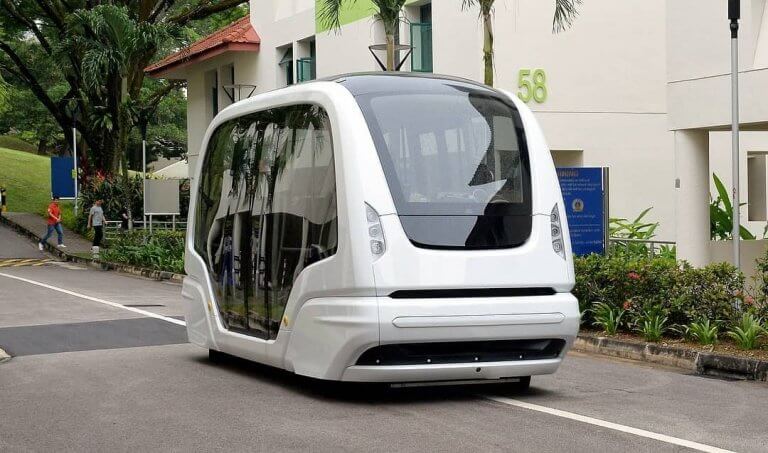
Starting university often marks the end of school dinners, break times and parents evenings. For some students, even the traditional school bus will now be left in childhood as universities introduce driverless buses to shuttle students around campus.
Singapore’s Nanyang Technological University (NTU) and Australia’s University of Melbourne are among the universities set to go driverless by 2020.
Both institutions are researching the future of driverless cars and vehicle autonomy. Driverless shuttles in controlled campus environments give researchers the chance to see the vehicles in action – as well as providing students a futuristic ride.
NTU’s Group Rapid Transit (GRT) system will operate a minibus service route that connects the halls of residences with the central academic areas. It is estimated 200 to 300 students will get to use the service daily, according to Today.
Yasssss NTU (Nanyang Technological University, Singapore) gets new driverless shuttle bus to ferry students across campus!!!!! https://t.co/sBe5eMF337
— Tracy Pham (@tracyph88) April 16, 2018
Each driverless minibus on the GRT route will use magnetic pellets embedded in the road for navigation, implement built-in sensors onboard to prevent collisions, and can ferry 24 passengers per vehicle.
The vehicles can cruise at a maximum speed of 60 kilometers per hour but are currently moving at 10 kilometers per hour during its trial period. The vehicle can effectively identify potential hazards, which makes it slow to a crawl before coming to a halt if there is a direct obstacle.
Some students are skeptical of driverless buses because of their speed compared to students go-to campus travel option, e-scooters, that can be ordered through an app called Jalan-Jalan.
A spokesperson for NTU told Today they are not planning to increase the speed of the GRT service to ensure the safety of passengers and other road users.
“It’s still undergoing trials, and that’s the purpose of why we are testing it… to find that sweet point for a speed suitable for the roads,” the spokesperson added.

Traditional buses will soon be left in the past on campuses. Source: Damian Carr/Unsplash
Melbourne’s service is slightly more niche, with vehicles that can carry eight passengers and travel up to 45 kilometers per hour. The buses will be rolled out in controlled campus environments, reported Computerworld.
“Having our own autonomous vehicle ensures researchers can further improve autonomous vehicle safety and how this integrates with other transport options,” said Majid Sarvi, University of Melbourne Professor in transport for smart cities.
The universities aim is to develop algorithms that allow the vehicles to communicate with each other and make decisions based on traffic data, so they can eventually be rolled out in city environments.
Liked this? Then you’ll love…
Why international students should get involved with technology and enterprise
University of Colorado students want to use drone tech to save whales







